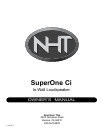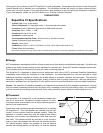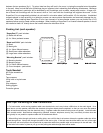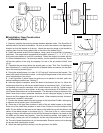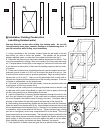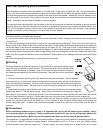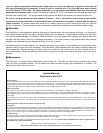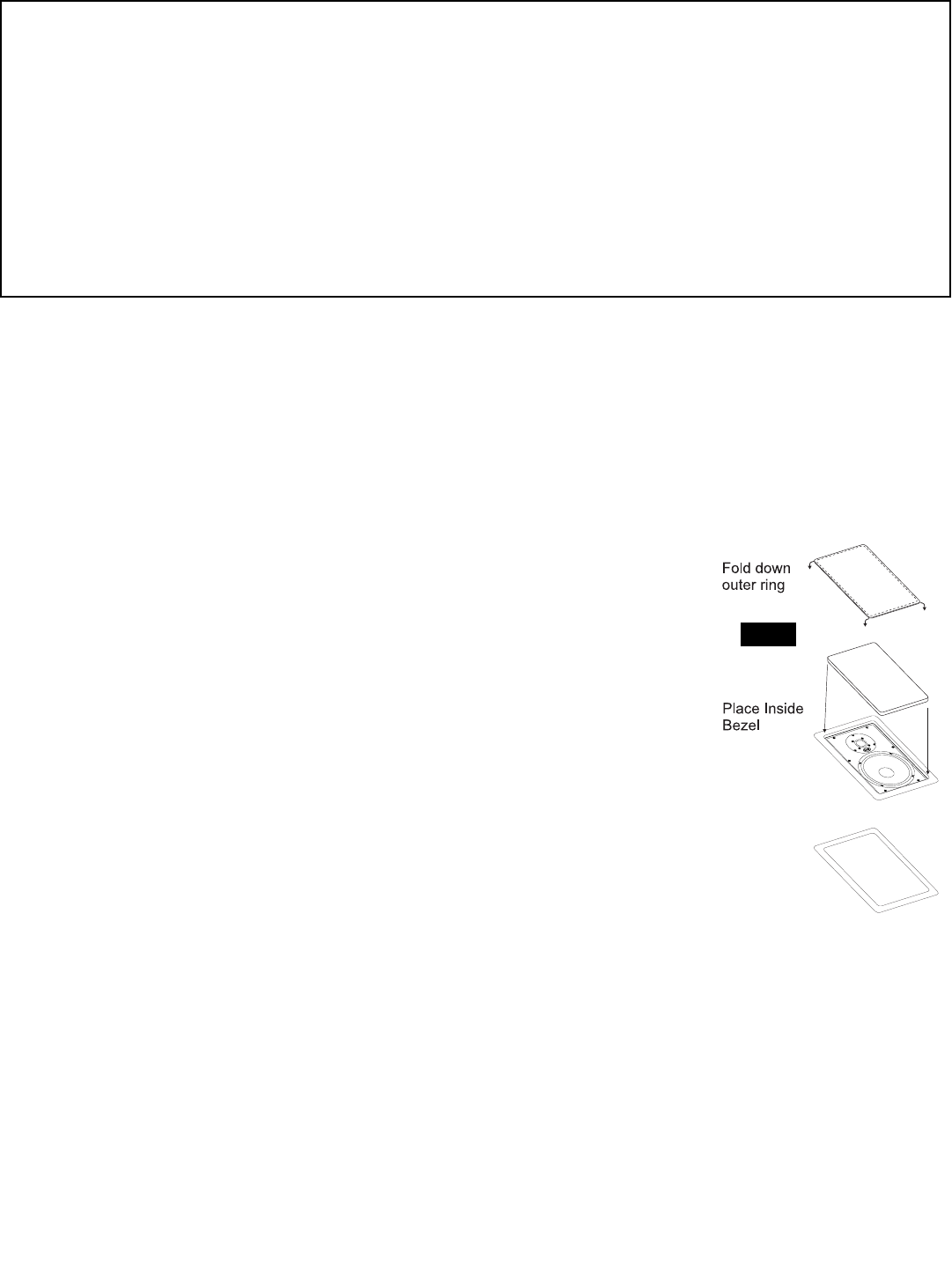
now before installing the baffle (see “Painting”).
8. Connect the speaker cable to the spring posts on the SuperOne Ci baffle, making sure to observe correct polarity (see
“Connections”).
9. Place one of the large foam isolators in each of the six raised bosses on the bezel. Place one of the small foam iso-
lators in each of the 6 holes on the front surface of the baffle. Put the baffle into the bezel so the holes on the baffle line
up with the holes in the center of the raised bosses on the bezel (fig. 10). Push one of the 4 x 16mm screws through a
hole on the baffle and into the hole on the bezel and tighten it by hand so that the baffle and the bezel stay together. Insert
the remaining screws, then tighten all of them snugly, making sure not to overtighten, as this may compromise the fit of the
baffle. The use of power screwdrivers is not recommended. Exersize caution not to damage the drivers when inserting the
screws.
10. Attach the metal grille by inserting it into the grooves in the baffle.
Painting
The bezel frame and grille of the SuperOne Ci are finished in a matte white powder-coated
finish that may be painted to match the wall. The frame and grille may be painted either
before or after the speaker is installed. Keep in mind that the grille contains hundreds of
tiny holes that are essential to the sound of the speaker. Take care not to cover these holes
with paint.
1. Paint the bezel frame and the grille at the same time using the same paint. Use the supplied
paint shield (fig.11) to protect the inside of the bezel from overspray (paint will reduce the effective-
ness of the absorptive materials). Fold the corners down and insert the paint shield into the grooves
where the grille would attach. Be careful not to punch through the round hole in the middle of the
shield.
2. When using spray paint, apply two thin coats, making sure to let the first coat dry completely before
applying the second. This will avoid running. When using a compressor and spray gun, apply the
paint using its finest setting. Painting with a brush is not recommended, but when necessary be sure to thin the paint so
as not to cover the holes in the grille. If paint does cover any of the grille holes, poke them out with a paper clip.
3. Once painting is complete, remove the paint shield from the bezel by carefully punching out the round hole in the
middle, and using this hole to pull the shield free. Do not attempt to paint the black baffle surface (which houses the
drivers) behind the grille. Its black finish prevents the speaker’s black drive units from being visible once the grille is
attached.
Connections
Before connecting speakers to your system, it is important that you turn off the power to your amplifier / receiv-
er to avoid damage to the equipment. Before installing the SuperOne Ci, map out the wiring paths between the
speakers and the amplifier. Make sure that the speaker cable does not rest on sharp or pointed objects.
The SuperOne Ci is compatible with virtually all quality amplifiers. Proper wiring of the speakers is essential to good sound.
At a minimum, 16AWG 2-conductor speaker cable is recommended for runs of 10 feet or less, with heavier special
purpose speaker cable used for longer runs. For best results, use equal length runs of cable for the left and right
Tech Tips: Optimizing Sonic Performance
Bass response is smoothest when the speaker is mounted within a rigid wall that flexes very little. For improved perfor-
mance, add 2”x4” cross-braces horizontally roughly one foot above and one foot below the speaker location. Use wood
glue and extra screws when attaching the drywall to the studs around the speaker. Additionally, once the speaker cutout
has been made in the drywall, add a bead of wood glue inside the wall where the drywall meets the studs and cross-
braces. If possible, use two layers of drywall for maximum rigidity.
For more controlled bass response, add insulation to the wall cavity around and behind the speaker to provide acoustic
damping. Be sure to add the same amount of insulation to speakers in the same room to ensure consistent sound. Use
R-12 or R-19 fiberglass insulation, and be sure to wear protective gloves to avoid contact with the fibers. If the insulation
is paper- or foil-faced, position the paper or foil side away from the speaker.
fig.11



